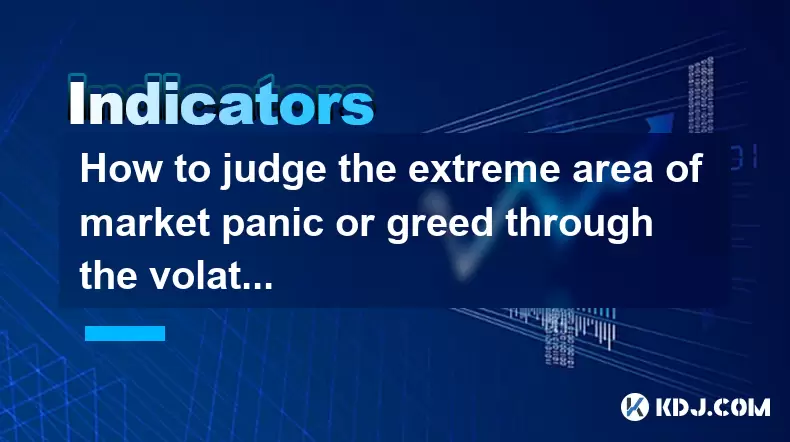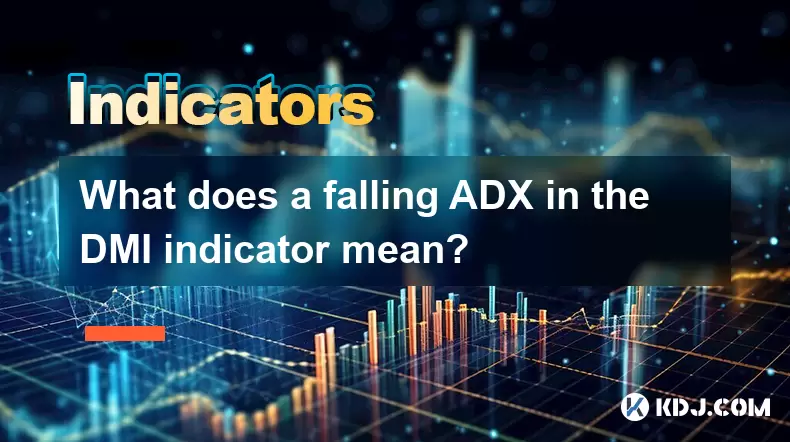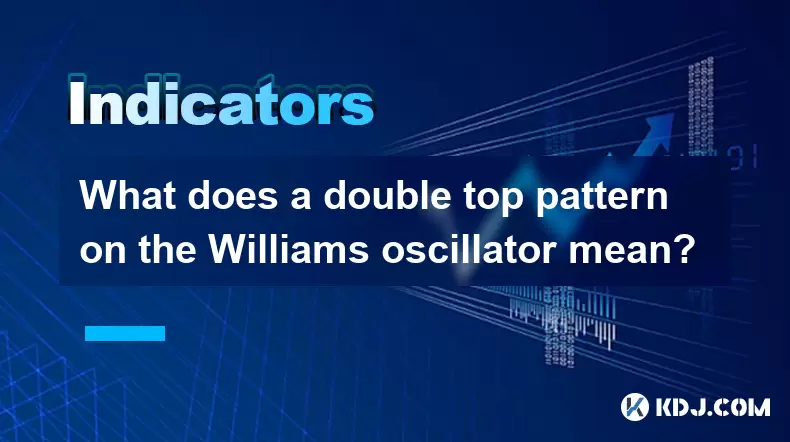-
 Bitcoin
Bitcoin $116700
0.24% -
 Ethereum
Ethereum $3973
4.34% -
 XRP
XRP $3.283
7.68% -
 Tether USDt
Tether USDt $1.000
0.01% -
 BNB
BNB $789.8
2.27% -
 Solana
Solana $176.2
3.31% -
 USDC
USDC $0.9999
0.00% -
 Dogecoin
Dogecoin $0.2238
5.14% -
 TRON
TRON $0.3389
-0.51% -
 Cardano
Cardano $0.7907
4.03% -
 Stellar
Stellar $0.4527
10.02% -
 Hyperliquid
Hyperliquid $41.07
4.27% -
 Sui
Sui $3.794
1.77% -
 Chainlink
Chainlink $19.49
10.40% -
 Bitcoin Cash
Bitcoin Cash $580.9
0.74% -
 Hedera
Hedera $0.2617
4.32% -
 Avalanche
Avalanche $23.41
3.67% -
 Ethena USDe
Ethena USDe $1.001
-0.03% -
 Litecoin
Litecoin $122.4
1.38% -
 Toncoin
Toncoin $3.364
1.49% -
 UNUS SED LEO
UNUS SED LEO $8.988
0.37% -
 Shiba Inu
Shiba Inu $0.00001295
2.82% -
 Uniswap
Uniswap $10.62
5.75% -
 Polkadot
Polkadot $3.922
4.46% -
 Dai
Dai $1.000
0.01% -
 Bitget Token
Bitget Token $4.494
2.15% -
 Monero
Monero $268.0
-1.30% -
 Cronos
Cronos $0.1523
3.68% -
 Pepe
Pepe $0.00001127
4.43% -
 Aave
Aave $285.4
4.85%
How to judge the extreme area of market panic or greed through the volatility index?
The VIX, a fear gauge, helps crypto traders identify market panic or greed, aiding in informed trading decisions based on sentiment analysis.
Jun 01, 2025 at 11:19 am

The volatility index, often referred to as the VIX, is a popular measure used in the financial markets to gauge the level of market fear or greed. In the cryptocurrency circle, understanding the VIX can help traders and investors make informed decisions based on market sentiment. Here, we will explore how to judge the extreme areas of market panic or greed through the volatility index in detail.
Understanding the Volatility Index (VIX)
The Volatility Index, commonly known as the VIX, is an indicator that measures the market's expectation of volatility over the coming 30 days. It is often referred to as the "fear gauge" because it tends to spike during periods of market stress and decline during periods of calm. In the context of cryptocurrencies, the VIX can provide insights into the sentiment surrounding digital assets.
The VIX is calculated using the prices of options on the S&P 500 index, but similar principles can be applied to cryptocurrency markets. For crypto, various platforms provide volatility indices specific to digital assets, such as the Crypto Volatility Index (CVI).
How the VIX Reflects Market Sentiment
The VIX is inversely related to market sentiment. When the VIX is high, it indicates that investors are fearful and expect significant price swings in the near future. Conversely, when the VIX is low, it suggests that investors are complacent and expect the market to remain relatively stable.
In the cryptocurrency market, a high VIX could mean that investors are panicking due to negative news, regulatory concerns, or other factors that could lead to a sell-off. A low VIX might indicate that investors are overly optimistic, potentially leading to a bubble or a correction if sentiment shifts.
Identifying Extreme Areas of Panic
To identify extreme areas of panic, traders should monitor the VIX for significant spikes. Here are some steps to follow:
- Monitor the VIX Daily: Keep an eye on the VIX readings daily. Sudden and sharp increases in the VIX can signal the onset of panic.
- Historical Comparison: Compare current VIX levels with historical data. If the VIX is at or near historical highs, it may indicate extreme panic.
- Correlation with Price Movements: Observe how the VIX correlates with cryptocurrency prices. During periods of high VIX, prices tend to be more volatile, often dropping rapidly.
- News and Events: Pay attention to news and events that could trigger panic. For instance, regulatory crackdowns or significant hacks can cause the VIX to spike.
Identifying Extreme Areas of Greed
Identifying extreme areas of greed involves monitoring the VIX for prolonged periods of low volatility. Here are the steps to follow:
- Monitor the VIX Daily: Just as with panic, daily monitoring is crucial. A consistently low VIX can indicate complacency and greed.
- Historical Comparison: Compare current VIX levels with historical lows. If the VIX is at or near historical lows, it may suggest extreme greed.
- Correlation with Price Movements: Observe how the VIX correlates with cryptocurrency prices. During periods of low VIX, prices may be rising steadily, often indicating a bullish market.
- Market Sentiment Analysis: Use tools like social media sentiment analysis to gauge investor mood. High levels of optimism can corroborate a low VIX reading.
Using the VIX in Trading Strategies
Traders can use the VIX to inform their trading strategies. Here are some practical ways to incorporate the VIX into your trading:
- Hedging: When the VIX is high, consider hedging your positions to protect against potential downturns. This might involve buying put options or diversifying your portfolio.
- Contrarian Investing: Use the VIX as a contrarian indicator. When the VIX is extremely high, it might be a good time to buy, as panic often leads to oversold conditions. Conversely, when the VIX is extremely low, it might be a good time to sell, as greed can lead to overbought conditions.
- Volatility Trading: Some traders specialize in volatility trading, buying and selling volatility products based on their expectations of future market movements. This can be a complex strategy and requires a deep understanding of options and derivatives.
Practical Examples in the Cryptocurrency Market
Let's look at some practical examples of how the VIX has been used in the cryptocurrency market:
- Bitcoin Crash of 2018: In early 2018, Bitcoin experienced a significant crash. The VIX spiked during this period, reflecting the high levels of panic among investors. Traders who monitored the VIX could have anticipated the crash and taken protective measures.
- Bull Run of 2020-2021: During the bull run from 2020 to 2021, the VIX remained relatively low for an extended period. This low volatility suggested that investors were overly optimistic, leading to a bubble that eventually burst in 2021.
Limitations of Using the VIX
While the VIX is a valuable tool, it has its limitations. Here are some factors to consider:
- Lag: The VIX is a forward-looking indicator, but it can sometimes lag behind real-time market movements. By the time the VIX spikes, the market may have already started to react.
- Not a Standalone Indicator: The VIX should not be used in isolation. It is best used in conjunction with other technical and fundamental indicators to get a comprehensive view of market sentiment.
- Crypto-Specific Volatility: The VIX is based on traditional financial markets. While crypto-specific volatility indices exist, they may not perfectly capture the unique dynamics of the cryptocurrency market.
Frequently Asked Questions
Q: Can the VIX be used for short-term trading in cryptocurrencies?
A: Yes, the VIX can be used for short-term trading in cryptocurrencies. Traders often use the VIX to gauge immediate market sentiment and make quick trading decisions based on spikes or drops in volatility. However, it's important to combine the VIX with other short-term indicators for the best results.
Q: How often should I check the VIX to stay informed about market sentiment?
A: Checking the VIX daily is recommended to stay informed about market sentiment. However, during periods of high market volatility, you might want to monitor it more frequently, such as hourly, to react quickly to changes in market conditions.
Q: Are there any tools or platforms that provide real-time VIX data for cryptocurrencies?
A: Yes, several platforms provide real-time VIX data for cryptocurrencies. Examples include the Crypto Volatility Index (CVI) by CBOE, and various volatility indices offered by crypto data providers like Coin Metrics and CryptoCompare. These tools can help you stay updated on the latest volatility levels in the crypto market.
Q: Can the VIX predict market crashes in the cryptocurrency market?
A: While the VIX can indicate high levels of fear and potential for increased volatility, it does not predict market crashes with certainty. It is one of many tools that can help traders anticipate potential downturns, but it should be used alongside other indicators and market analysis techniques.
Disclaimer:info@kdj.com
The information provided is not trading advice. kdj.com does not assume any responsibility for any investments made based on the information provided in this article. Cryptocurrencies are highly volatile and it is highly recommended that you invest with caution after thorough research!
If you believe that the content used on this website infringes your copyright, please contact us immediately (info@kdj.com) and we will delete it promptly.
- Roman Storm, Funding Effort, and the Looming Defense Retrial: A New York Minute on the Tornado Cash Case
- 2025-08-09 02:50:14
- Crypto's Wild Ride: XRP, Dogecoin, and the Altcoin Surge You Can't Ignore
- 2025-08-09 02:50:14
- Elon Musk, Bitcoin, and the Enduring Power of Approval: A Crypto Love Story?
- 2025-08-09 03:50:15
- Ruvi AI: The Next Big Thing After Ripple on CoinMarketCap?
- 2025-08-09 03:50:15
- Floki Price Surges: Elliott Wave and Fibonacci Setups Point to Potential Gains!
- 2025-08-09 02:30:16
- Pepe Price, RTX (Remittix?) & the $10K ETH Dream: NYC Crypto Chatter
- 2025-08-09 02:30:16
Related knowledge

What does it mean when the TRIX indicator suddenly diverges downward after a long period of convergence?
Aug 09,2025 at 12:56am
Understanding the TRIX Indicator in Cryptocurrency TradingThe TRIX indicator, or Triple Exponential Average, is a momentum oscillator used in technica...

Why is the rise limited after a MACD bottoming divergence?
Aug 09,2025 at 12:07am
Understanding MACD Bottoming Divergence in Cryptocurrency TradingThe MACD (Moving Average Convergence Divergence) is a widely used technical indicator...

What does it mean when the OBV continues to rise but the price is trading sideways?
Aug 08,2025 at 10:35pm
Understanding On-Balance Volume (OBV)On-Balance Volume (OBV) is a technical indicator that uses volume flow to predict changes in stock or cryptocurre...

What does a falling ADX in the DMI indicator mean?
Aug 09,2025 at 03:16am
Understanding the ADX and DMI Indicator FrameworkThe DMI (Directional Movement Index) is a technical analysis tool developed by J. Welles Wilder to id...

What does a double top pattern on the Williams oscillator mean?
Aug 09,2025 at 02:36am
Understanding the Williams %R OscillatorThe Williams %R oscillator is a momentum indicator developed by Larry Williams to identify overbought and over...

What is a nonce and how is it used in Proof of Work?
Aug 04,2025 at 11:50pm
Understanding the Concept of a Nonce in CryptographyA nonce is a number used only once in cryptographic communication. The term 'nonce' is derived fro...

What does it mean when the TRIX indicator suddenly diverges downward after a long period of convergence?
Aug 09,2025 at 12:56am
Understanding the TRIX Indicator in Cryptocurrency TradingThe TRIX indicator, or Triple Exponential Average, is a momentum oscillator used in technica...

Why is the rise limited after a MACD bottoming divergence?
Aug 09,2025 at 12:07am
Understanding MACD Bottoming Divergence in Cryptocurrency TradingThe MACD (Moving Average Convergence Divergence) is a widely used technical indicator...

What does it mean when the OBV continues to rise but the price is trading sideways?
Aug 08,2025 at 10:35pm
Understanding On-Balance Volume (OBV)On-Balance Volume (OBV) is a technical indicator that uses volume flow to predict changes in stock or cryptocurre...

What does a falling ADX in the DMI indicator mean?
Aug 09,2025 at 03:16am
Understanding the ADX and DMI Indicator FrameworkThe DMI (Directional Movement Index) is a technical analysis tool developed by J. Welles Wilder to id...

What does a double top pattern on the Williams oscillator mean?
Aug 09,2025 at 02:36am
Understanding the Williams %R OscillatorThe Williams %R oscillator is a momentum indicator developed by Larry Williams to identify overbought and over...

What is a nonce and how is it used in Proof of Work?
Aug 04,2025 at 11:50pm
Understanding the Concept of a Nonce in CryptographyA nonce is a number used only once in cryptographic communication. The term 'nonce' is derived fro...
See all articles

























































































